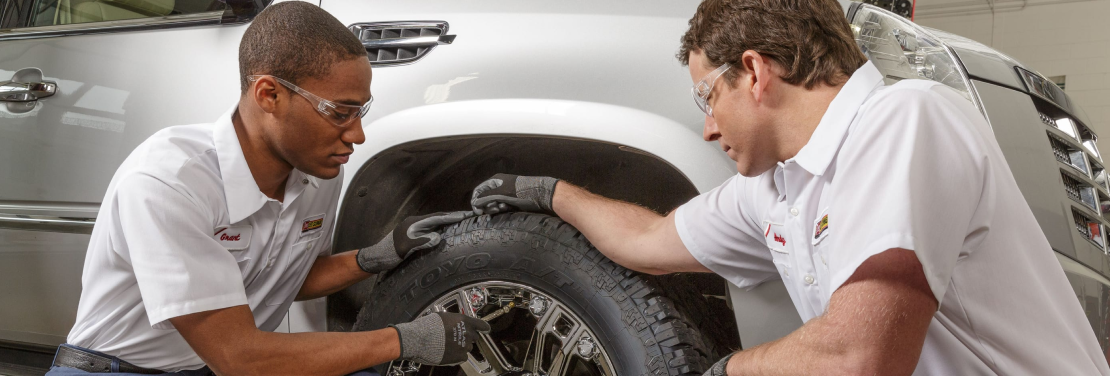Trust Fund Morris Tire and Alignment for Specialist Service and Treatment
Trust Fund Morris Tire and Alignment for Specialist Service and Treatment
Blog Article
Tire Solution: Recognizing Tire Pressure Monitoring Equipments
Comprehending Tire Stress Monitoring Solutions (TPMS) is a critical element of keeping optimal car efficiency and safety on the roadway. With advancements in auto technology, TPMS has actually ended up being a conventional attribute in modern automobiles, providing real-time info on tire stress levels.

Value of TPMS
The value of Tire Stress Tracking Solutions (TPMS) hinges on their ability to boost vehicle safety and security and efficiency with real-time monitoring of tire pressure degrees. Preserving the right tire stress is critical for ensuring optimal handling, braking, and total security of a vehicle. TPMS gives motorists with instant responses on any type of underinflated or overinflated tires, enabling for prompt modifications to be made.
Parts of TPMS
Sensors are usually located in the tire valve stem or attached to the wheel setting up, where they gauge tire stress and transmit information to the control module. Some advanced TPMS versions also show the actual tire stress readings for each tire, giving vehicle drivers with real-time info to make sure ideal tire performance and safety. By keeping an eye on tire stress constantly, TPMS assists protect against accidents, minimizes tire wear, and boosts gas performance, making it a vital component for vehicle safety and performance. mopar tire service specials.
Kinds Of TPMS

On the other hand, indirect TPMS counts on the lorry's wheel rate sensors to keep track of tire stress. This system detects underinflation by comparing the rotational speeds of the wheels. Indirect TPMS is less costly than straight TPMS, as it utilizes existing sensing units within the automobile.
While straight TPMS uses extra exact analyses, indirect TPMS is less complex in layout and typically requires less maintenance. Both systems have their constraints and benefits, and the selection in between them frequently depends upon factors such as expense, automobile make, and personal preference. Recognizing the distinctions in between these two kinds of TPMS can aid vehicle owners make informed decisions pertaining to tire upkeep and safety.
TPMS Maintenance Tips
Efficient upkeep of TPMS is essential for making sure optimum performance and security of your lorry. Regularly inspecting the TPMS sensors for any kind of damage or rust is crucial. Make sure that the sensors are tidy and cost-free from debris that might conflict with their performance. In addition, find out it is advisable to inspect the sensor batteries regularly and change them as required to assure exact analyses. Conduct regular checks on the tire stress degrees and contrast them with the TPMS analyses to ensure they are consistent. Alter the system following the supplier's standards if there are any type of inconsistencies. Furthermore, during tire turning or replacement, make sure that the TPMS parts are taken care of very carefully to stop any kind of potential damage. Finally, if the TPMS warning light brightens on the dashboard, attend to the problem immediately by inspecting the tire pressures and the general system for any type of mistakes. By adhering to these upkeep ideas, you can prolong the life-span of your TPMS and improve the safety of your driving experience.
Advantages of Proper Tire Pressure
Preserving appropriate tire pressure, as emphasized in TPMS Upkeep Tips, is crucial for reaping the countless benefits associated with optimum tire stress degrees. One of the primary benefits of keeping the proper tire stress is enhanced fuel efficiency. When tires are properly inflated, there is less rolling resistance, bring about far better gas economic situation. In addition, proper tire pressure guarantees even tire wear, prolonging the life-span of the tires and promoting more secure driving conditions. With the right tire pressure, automobiles also have far better handling and grip, specifically in damaging climate conditions. This can improve total driving performance and safety for the driver and passengers. Preserving ideal tire stress can add to a smoother and a lot more comfy adventure by lowering vibrations and sound triggered by underinflated tires. Finally, the benefits of proper tire stress surpass simply tire durability; they encompass boosted gas efficiency, enhanced safety, far better car efficiency, and overall driving convenience.
Verdict
Finally, recognizing tire pressure monitoring systems (TPMS) is other critical for keeping ideal see this here tire stress and making certain car security. By identifying the significance of TPMS, recognizing with its parts, understanding the different types readily available, adhering to appropriate upkeep pointers, and recognizing the benefits of keeping proper tire pressure, chauffeurs can boost their driving experience and extend the lifespan of their tires. Correct tire stress is key to risk-free and reliable lorry operation.

Report this page